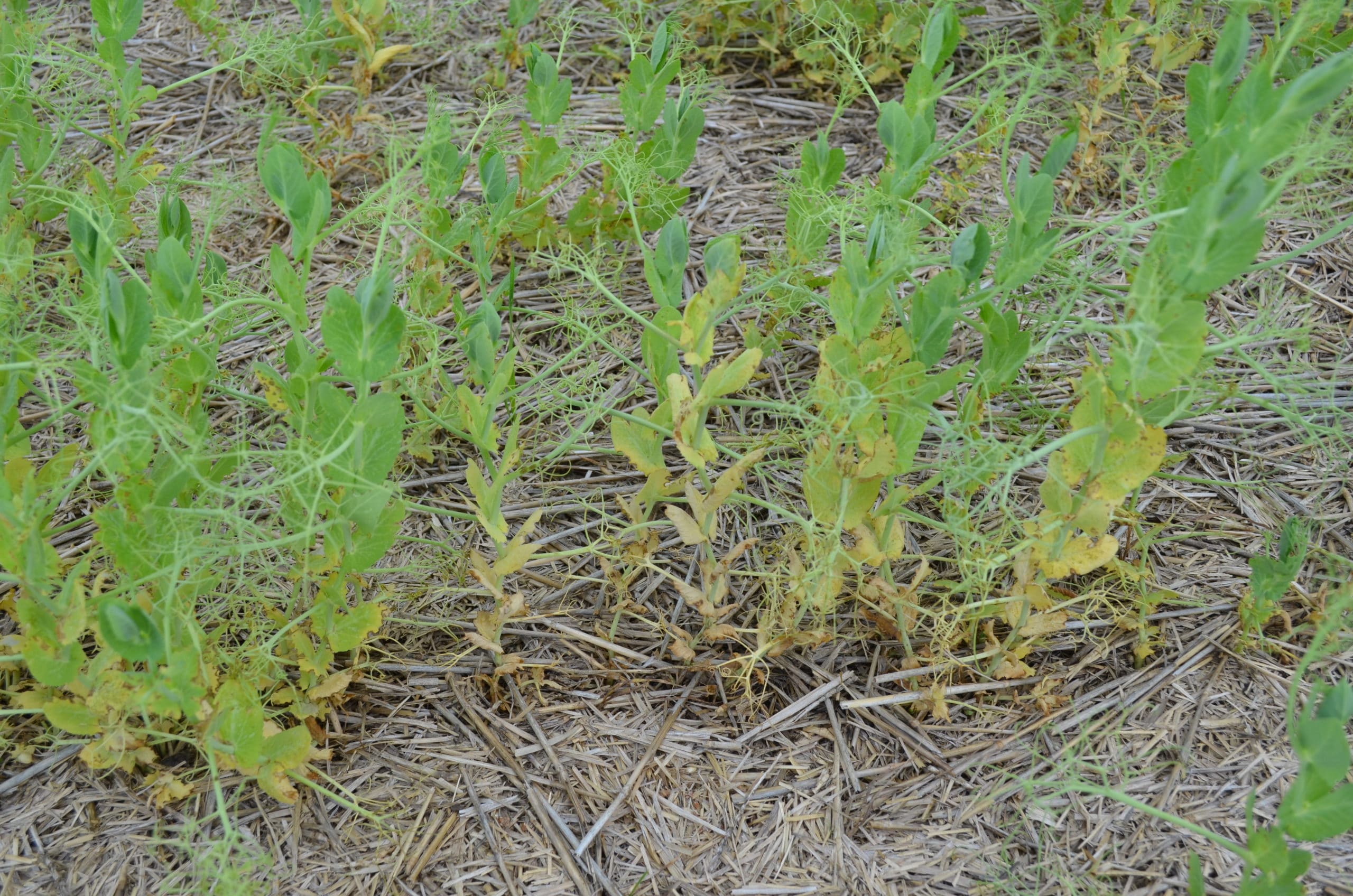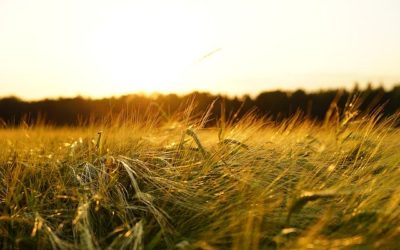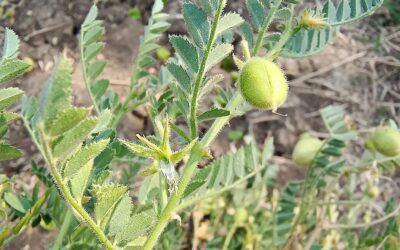Plants early season in the season infected with Aphanomyces. Photo: Sherrilyn Phelps, Saskatchewan Pulse Growers
Root rot in peas caused by Aphanomyces has become an increasing problem in fields across southern Alberta over the last decade.
In 2012, a new problem emerged on Prairie fields. The leaves on pea plants were yellowing just above the ground, there was a pinching of the stem right at the soil surface and the roots were a honey brown colour. Yields in infected fields were dropping anywhere from 30 to 50 per cent.
Many were writing it off as fusarium infection. But no there was another plant disease sitting in the soil and stalking its prey — Aphanomyces.
“In a lot of cases, we visually identified Aphanomyces or fusarium regularly. And in looking back, we probably just wrote it off to be fusarium and not looked any deeper,” says John Ippolito, crops extension specialist with the government of Saskatchewan. “One of the problems with Aphanomyces is we really have to go to kind of a molecular type lab analysis to determine that Aphanomyces was present.”
In 2012, the first fields of peas infected with Aphanomyces were identified in Saskatchewan. In the nine years since then, more fields across Saskatchewan and into Alberta have been diagnosed with the disease and farmers have found themselves searching for ways to fight it off.
Even though it only was identified in the last decade, there is proof it’s been on the Prairies for much longer than that. Tests of samples of soil from roadsides have found to be infected with Aphanomyces, leading researchers to believe Aphanomyces has always been present in the soil.
“It’s been naturally occurring, but some of our cropping practices over the last 30 to 40 years have multiplied the pathogen significantly,” Ippolito says.
Fighting Aphanomyces in the Fields
Aphanomyces pops up in wet years. The pathogen likes wet conditions as it is a water mold and needs excessive moisture to move to the roots, Ippolito explains. Peas, along with lentils, dry beans and alfalfa, act as a host crop for it.
“We’re finding (Aphanomyces) is more prevalent on clay loam and clay soils that have less drainage or not perfect drainage. And then compaction, in Western Canada anyways, we’re really finding compaction is also a contributing factor,” Ippolito explains.
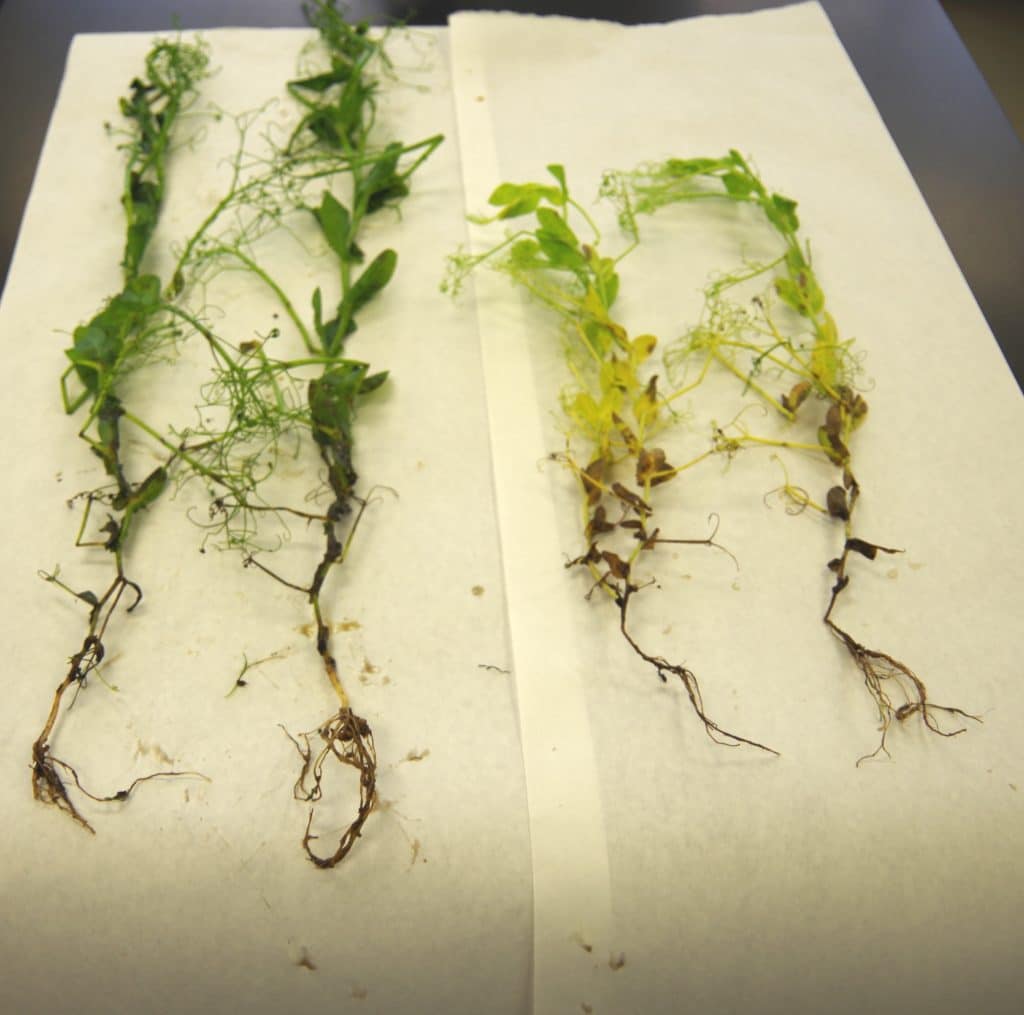
With Aphanomyces still being a relatively new threat to Prairie fields, the main recommendation to fight back against the pathogen is to stretch out crop rotations. Before Aphanomyces was identified, most farmers were using a four-year rotation for peas, but now it is recommended to switch to a six or even an eight-year rotation. There are still pulse crops which can be used instead of peas or lentils during those years, chickpeas, faba beans and soybeans have not been found to be host crops.
As the pathogen is soil borne, it is also recommended farmers should treat it as similar to clubroot and clean machinery after working in infected fields to reduce spread to non-infected fields.
To date, findings have been inconclusive if tillage helps reduce the threat, Ippolito says. There are seed treatments available for suppression of Aphanomyces, but Ippolito explains they have been finding the treatments don’t last long enough as the pathogen pops up in June to early July.
“I guess that’s the frustrating part, there’s no kind of in crop management tool for this disease complex. That’s why it’s so critical we manage it up front,” Ippolito says.
The only way to be sure if Aphanomyces is plaguing your field is to get a lab test done. At 20/20 Seed Labs they recommend pulse root rot and soil tests to diagnose the pathogen.
For a pulse root rot test, a plant sample with a root intact is needed, Samiya Fatima, plant disease diagnostician at 20/20 Seed Labs, explains. The root tissue is first visually inspected for pathogen symptoms, slides are then made of the root tissue to examine for spore presence. The symptomatic tissue is then plated and incubated for seven days to allow colonies to grow.
In soil testing, Fatima says 20/20 recommends soil samples from waterlogged areas in suspected infected fields. The soil should be taken and kept in a sealed bag. Seed testing can be done but it is not recommended as Aphanomyces is not thought to be seed borne. If a seed is submitted, they test the soil attached to the seed.
“Every Aphanomyces positive sample we have at the lab has some levels of fusarium infection. So, more often than not fusarium is with Aphanomyces root rot,” Fatima says.
Future Hope
There are reasons to be optimistic about the future fight against Aphanomyces. At the University of Saskatchewan Crop Development Centre (U of S CDC), they have been studying the pathogen and are working on breeding Aphanomyces resistant pea varieties.
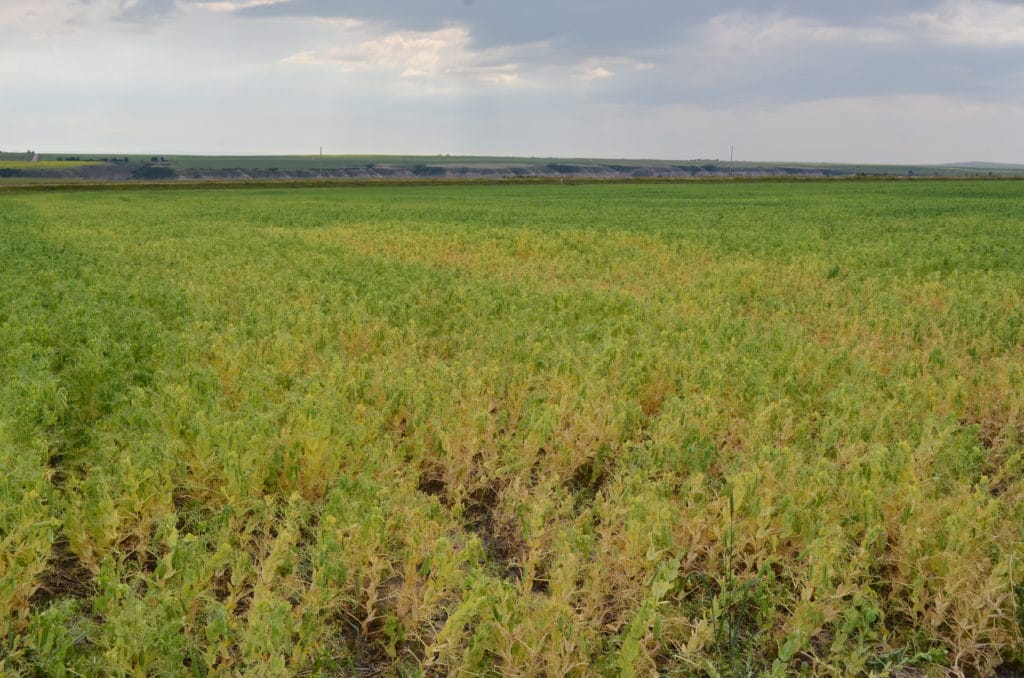
The team has looked internationally for help in their breeding work. Researchers in the United States Pacific Northwest and France have been working on Aphanomyces resistance breeding for the past two decades. The pathogen has been infecting pulse crops there longer.
U.S. and French researchers have screened germplasm from various pea collections around the world and have found some which are partially resistant to Aphanomyces. They have made crosses between these germplasms and varieties with pea varieties from their regions and have been able to develop pea varieties which are partially resistant to Aphanomyces.
At the U of S, they have built on the work done by their U.S. and French counterparts crossing partially resistant varieties with CDC pea varieties, Tom Warkentin, the pulse crop breeding and genetics chair at the University of Saskatchewan explains.
“This past summer we had about 15 of these populations in the field, mainly for seed multiplication. Our plan is to take these into multi location trials starting this coming spring to see how they look, both from a disease resistance point of view and from all the other points of view, in terms of how they yield and lodging, maturity and seed quality,” he says.
However, these varieties won’t get into farmers hands for another seven or more years. The U of S plans to start variety registration trials in 2022, then release them in 2024 or 2025, with a few more years of seed multiplication required before some of the varieties will finally become commercially available in 2028 at the earliest.
With files from Marc Zienkiewicz


